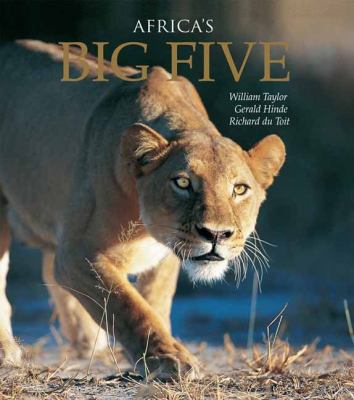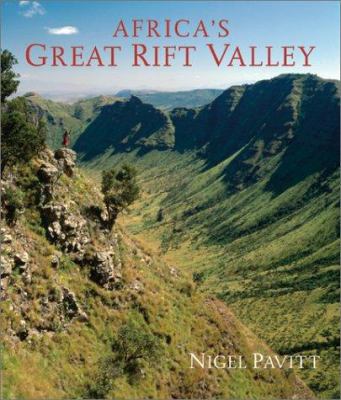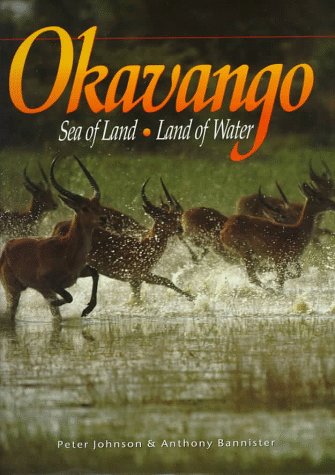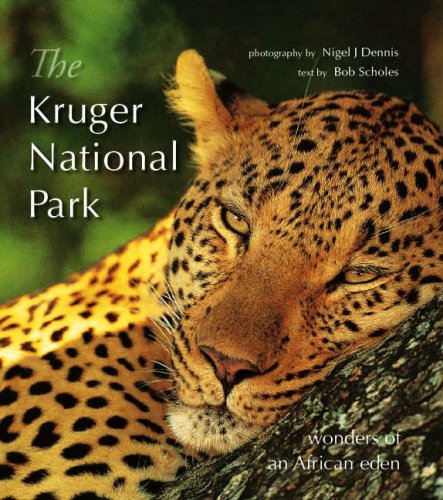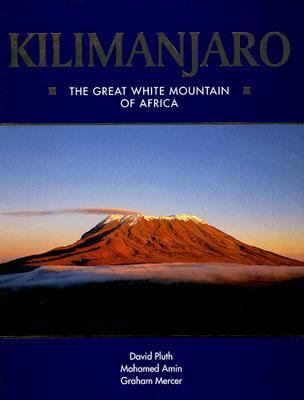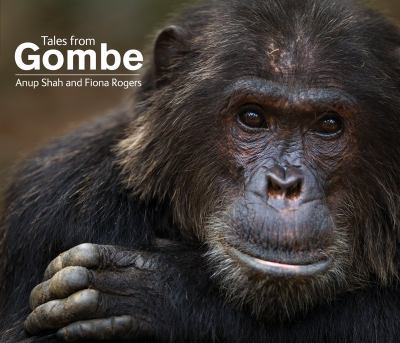Published Photographers
Bringing Africa into our libraries and lounge rooms
Photographers
Below is a selection of wildlife photographers who over the past 50 years have brought their amazing work, and Africa, to the attention of the world through their publications on the wildlife, wild places and landscapes of Africa.
Peter Beard
'The End of the Game: The Last Word from Paradise'
"There is incongruity in what Peter Beard does. He is a fashion and wildlife photographer, a man who occupies the space between frivolity and substance". Nigel Farndale, The Telegraph 2006
Peter Beard had spent long stretches in Africa since 1955. He evidently started out in Africa as a youthful lark (being a trust-fund bon-vivant with a colorful social history), but over time came to recognize a calamity in the making. Long before the current wildlife holocaust began to play out in earnest, he saw it coming, and tried to sound an alarm. The "game" in the title refers to Africa's rôle as a playground for wealthy Europeans and Americans, going on Safari to casually massacre elephants and lions for trophies. To his credit, Beard tried to get Western journalists interested. His disgust at a smugly misleading 60 Minutes story in 1980 crackles off the page. The last section is a horrifying collection of aerial photographs of hundreds of elephant skeletons and carcasses. On some pages the images of dead elephants are laid out in a grid, precisely like Bernd and Hilla Becher's "typologies." The photographic reproductions are mediocre at best, and the original images more documentary than artistic. But it's still a fascinating book. Originally published in 1965, this landmark work dramatically documents the changing history of African wildlife, focusing on the widespread destruction of the African elephant. Beautifully illustrated with over 300 contemporary and historical photographs as well as dozens of paintings, "The End of the Game" is a legendary work vividly telling the story of explorers, missionaries, and big-game hunters whose quests have changed the face of Africa forever."The wilderness of only half as century ago, then so completely itself, has been reduced tree by tree, animal by animal, shadow by shadow, rock by rock, to last rutted corners. The few remaining spaces have been infiltrated, divided up, domesticated, deprived of natural sysytems, denuded of natural processes, systematised, artificialised, sterilised, commercialised..." Peter Bear, End of the Game.
Peter Johnson & Anthony Bannister
'Okavango - Sea of Land and Land of Water'
Born in summer rain in the mountains of Angola, here is the book about the Okavango. Namibia: Africa's Harsh Paradise This book reveals the world of Namibia: its varied landscapes, its vast diversity of wildlife, and its myriad tribal peoples. With a collection of photographs and text, it unfolds the story of this most individual of southern African lands. The Bushmen by Peter Johnson & Anthony Bannister with text by Alf Wannenburgh. The subject matter of this book has proved very popular in the past, as have other books in this series, with their accent on full-colour photography. This particular title features photography by Peter Johnson & Anthony Bannister (one of South Africa's foremost wildlife photographers) with illuminating captions. The over 80 photographs in full-colour give a visual record of a way of life that is under threat. In an introductory essay, the archaeologist David Lewis-Williams describes the way of life of a people whose culture has all but entirely vanished. The focus of the title is on the lifestyle of the San Bushmen: their art, culture and the survival techniques, which have helped them eke out an existence in an unforgiving environment. The introduction gives both a brief history of these resilient people and an insight into the way they live.Peter & Beverley Pickford
'African Safari' + 'Forever Africa' + 'The Miracle Rivers'.
Born and educated in Africa, both Peter and Beverly are committed conservationists, and inveterate travelers and explorers. Beverly and Peter met in 1979 and soon after joined forces as safari-lodge managers. But, not wishing to live under South Africa’s apartheid regime, they decided to travel the world by yacht, with the possibility of finding a new place to call home. The sailed across the Atlantic, then spent the next two-and-a-half years walking, hitchhiking, driving and travelling by train across both South and North America.
Before embarking on this journey, Peter had developed a growing passion for photography by working as a photojournalist for a well-known South African newspaper. For her part, Beverly attended a course in photography at the Miami Dade University; she began as Peter’s photography assistant and later joined him as a photographer in her own right. Together, they sought out the wild places and national parks of the Americas and paid their way as freelance photojournalists, working for magazines around the world. Nearly three years after their journey began, and feeling homesick for Africa and their families, they returned home. Once back on African soil, they immediately returned to being immersed in the Africa of conservation, wildlife photography and eco-lodges. Living permanently in the African bushveld and publishing their wildlife experiences, it became clear to Peter and Beverly that, through the art of imagery and the power of the written word, they could make a difference in the conservation of wilderness. Their first book, Wilderness Dawning, on the Kruger National Park and adjacent private reserves, was published to critical acclaim in 1987. The couple’s next assignment took them on an extensive journey across Africa, resulting in African Birds of Prey; published in 1989, the book ran to five editions. Having earlier crossed paths with the Himba tribe of Namibia, Peter and Beverly sought a deeper grasp of these remote people’s remarkably intact traditional culture; they lived with them for nearly a year, taking the photographs for Himba: Nomads of Namibia which was published in 1990. Their following assignment, to take the photographs for West Coast: A Circle of Seasons, inspired Beverly and Peter’s love for the wild seas and coastline of the West Coast of Southern Africa; it was published in 1991. Peter’s ardour for being on wild rivers with a fly-fishing rod then took the pair on a photographic journey that became Fly-fishing in Southern Africa, published in 1993. The next two years were spent immersed in the wilderness of Botswana, making The Miracle Rivers: The Okavango and the Chobe of Botswana, which became a bestselling photographic book on Africa, selling 120,000 copies. Fly-fishing in wild places then took Peter and Beverly on an exploratory journey around the world, as they took the photographs for The Longest Cast: Fly-fishing Destinations of the World, published in 2001. In the years 2001 and 2002, Beverly and Peter followed a lifelong dream; they drove alone across the continent of Africa – from Cape Town to Morocco – in their Land Rover; they went in search of Africa’s last true wildernesses and traditional cultures, publishing Forever Africa – A Journey from the Cape of Good Hope to Morocco in 2004. In 2008, African Safari – Into the Great Game Reserves was published, a tribute to the role protected wildlife areas, and the people and lodges that support them, play in African wildlife conservation. Thirty-five years of living beside the wild earth has taught Peter and Beverly that all of us, whether consciously or unconsciously, are tied to the land of our cultural history, to its wildness and the attendant creatures. So, in 2011, they embarked on their most ambitious journey yet – they spent the next four years travelling to all seven continents, in search of the last wild land on earth. Wild Land is a poignant reminder of our frangible relationships with the pristine country of each of our personal histories. Today, although their work takes them all over the world, the continent of Africa remains Peter and Beverly’s home. They have created two nature reserves in their own right: purchasing land, exorcising all exotic influence to return it to its pristine state, and then ensuring its legal protection into the future. When not on assignment, they live in one of these reserves on the West Coast of South Africa, surfing, hiking and kayaking in the company of the thousands of seabirds and seals they have helped to protect. Over the years, Peter and Beverly’s work has received numerous international accolades and awards, including Agfa Wildlife Photographer of the Year, Kodak Black and White Photographer of the Year, and several highly commended placings in the BBC Wildlife Photographer of the Year Awards.Nigel Pavitt
'Africa's Great Rift Valley' + 'Samburu' + 'Turkana'.
Nigel Pavitt has spent four decades in East Africa, as army officer, business chief executive, entrepreneur, photographer and traveler. He has flown, driven, and hiked thousands of miles across its plains, through its forests, and up its mountains, camping in remote areas and experiencing its seasons in all conditions. Mr. Pavitt has published five books about Africa, one titled "Africa's Great Rift valley', two containing his photographs of tribal life ('Samburu' and 'Turkana') and two on the early explorers/settlers of East Africa. He has been honored with an MBE (Member of the British Empire) awarded by Queen Elizabeth II in 1965 and an OGW (Order of the Grand Warrior) presented by the President of Kenya in 1993. A Fellow of the Royal Geographical Society, London, he lives in Nairobi.
Roger & Pat De La Harp (a selection)
In search of the African lionThe African lion (Panthera leo), long celebrated as the king of beasts, faces unprecedented challenges in the wild today. Loss of habitat through the expansion of human activity increasingly restricts the lion to game reserves and national parks, while diseases such as bovine tuberculosis pose a threat to the health of lion prides. Over a period of two years, Roger and Pat de la Harpe have documented wild lions of South Africa, and the result is a superbly photographed and engagingly written tribute to this often misunderstood predator. In Search of the African Lion enters the complex world of the lion, describing pride dynamics, hunting patterns, the reproductive cycle and interactions with human communities. The book focuses on four main areas: the Kalahari, the Madikwe/Mapungubwe area, the Greater Kruger National Park and Northern Zululand each with its own problems, challenges and opportunities. In addition, the authors highlight the important work done by game rangers, wildlife managers and scientific researchers in understanding the lion and in protecting existing populations. The In search of...series focuses on the plight of threatened and endangered species.
In search of the African Wild DogPerhaps the most successful hunter in Africa, the African wild dog, Lycaon pictus, ironically finds itself on the brink of extinction. Part of the Canidae family, and sharing a general similarity with the various canids world-wide, the African wild dog differs fundamentally from other canids: it belongs to the genus, Lycaon, which formed a new branch on the family tree some 3 million years back and subsequently evolved independently. Today it is the only survivor of this unique line and, because of its genetic difference, is unable to interbreed with any of its canid relatives or even with the domestic dog. Previously found in diverse habitats across the continent, it has tragically disappeared from much of its former range. Today there are only an estimated 3 000 to 5 500 wild dogs left in the whole of Africa, a mere 500 of which occur in South Africa. This is a stunningly photographed and well-documented tribute to these rare and endangered animals, covering their history, biology, distribution, habitat, and breeding and release programmes. In spite of, or perhaps because of, the elusive nature of the wild dogs and their limited population numbers, Roger and Pat have produced their best book yet.
African Icons - David Bristow & Roger de la HarpeRenowned writer David Bristow and award-winning photographers Roger and Pat de la Harpe visited Africa's must-see places to share their insights with the world on the 21 most iconic places on the most beguiling continent on earth. After all, who would not want to say they have visited Table Mountain, the High Atlas, the wonders of ancient Egypt, the East African savanna, the great deserts of the Kalahari and the Namib, the jungles of central Africa and the continent's wondrous coastline.
Daryl & Sharna Belfour (a selection)
African Elephants by Daryl & Sharna BalfourAn illustrated guide to the elephants of Africa. Colour photographs display a variety of elephant moods and activity in natural habitats in Africa, highlighting in particular their intelligence and social behaviour.
Panoramic Journey Through Botswana by Daryl BalfourPhotographs highlight the country's prime attractions. From the vast Kalahari Desert and Makgadikgadi Pans to the lush waterways of the Okavango Delta and game-rich reserves such as Moremi, Chobe, Mashatu and the Kgalagadi Transfrontier Park (formerly the Kalahari Gemsbok National Park). Also featured are the Tsodilo Hills, which are known for their fine San rock paintings, and some of the better-known lodges that offer accommodation in and around the various wildlife sanctuaries.
Etosha by Daryl & Sharna BalfourThe Etosha Park is one of Africa's game sanctuaries. Covering an area of 22,270 square kilometers in the northern territory of the newly independent Namibia, this semi-arid wilderness is renowned not only for its beauty but for the staggering diversity of plant, bird and animal life which it supports. The pan itself, 130 x 72 kilometers in extent, is a unique physical feature and the vast numbers of animals that depend on it make it sensational. The contrasts of this area are governed by its seasons: desicating heat followed by a wet season of lushness and abundance. The life and death dramas resulting from the climate present fantastic photographic opportunities and the Balfours have taken advantage of these, delivering an evocation of this harsh and surreal paradise. The supporting text also deals with broader environmental matters. Etosha's conservators have initiated several unique and remarkable policies, including black rhino relocation, dehorning of rhinos, placing lions on birth-control pills and the fencing off of predator-free zones. There have been a fair number of errors which have led to mammal population collapses on the one hand and explosions on the other.
This is Botswana by Daryl & Sharna BalfourThis is Botswana takes the reader on an incredible panoramic journey of discovery through a land of great diversity and natural beauty, from the arid vastness of the Kalahari desert to the lush waterways of the Okavango Delta. Broad in its scope yet revealing fascinating detail about this enigmatic land, This is Botswana is a compelling visual essay on the country, its peoples and its wildlife. Over 250 stunning photographs provide an exciting and diverse overview of the country. These are complemented by a detailed introductory text that both establishes historical perspective and offers insight into the realities of a country moving hesitantly, but with hope, into a challenging future.
Rhino by Daryl BalfourThe black, white, Indian, Javan and Sumatran rhinos are covered in this photographic record of the life of the rhino in its natural habitat, which illustrates their habits and social behaviour.
Daryl and Sharna Balfour lived and worked in the Okavango Delta for two years, observing and recording Rhinos in their natural habitat. This is a photographic document recording the life of this creature in its natural habitat. Throughout Africa, where they occur, the white and black rhinoceroses are severely threatened: this is partly because of habitat pressures, but by far the most menacing threat to these animals is from poaching, for the rhino shares with the elephant the demand for a small but valuable part of its body, the horn. The introduction to the book dwells on the whole dilemma of the rhinoceros and what is being done by various governments in Africa. The rhino horn racket is discussed, as is the natural history of these creatures. Photography is used to show the rhino in its natural surroundings throughout Africa, their habits and social behaviour, and also the animals which associate with them. The Indian, Javan and Sumatran rhino are also discussed. An appendix summarizes each of the five rhino species, giving details of the scientific and common names, size, identification characteristics, habitat and habits, food preferences, reproduction, distribution and status. A map indicates the distribution of present-day and historic populations of rhino, and agencies dedicated to helping to save the rhino are listed with a further reading list.Nigel Dennis (a selection)
'The Kruger National Park - wonders of an African eden' by Nigel Dennis & Bob Scholes - The result of a two year photographic project, this book has proved very popular and is now due to go into an eighth reprint as a new revised edition. The photographs show the animals, birds, reptiles, flora, trees and varied habitats of South Africa’s premier National Park. Comprehensive text by Bob Scholes gives a wonderful insight into the ecology of the region. Don't visit the Kruger Park without a copy of this book! Revised Edition December 2005. Struik New Holland. ISBN 1853685933.
'The Kalahari - survival in a thirstland wilderness' by Nigel Dennis, Michael Knight and Peter Joyce - Nigel and Wendy spent fourteen months there over a two year period when collecting pictures for this book. Their aim was to portray the diversity of life in the Kalahari throughout the seasons. Includes coverage of rare and seldom seen species - such as the prehistoric looking pangolin. Also shows enchanting images the Kalahari’s wonderful meerkats, as well as the famous big cats of this region - lion, leopard and cheetah. Excellent well researched text by Michael Knight and Peter Joyce. First published 1997. Struik New Holland Publishers. ISBN 1868720195. 'Waterbirds' by Nigel Dennis & Warwick Tarboton - Illustrates 83 waterbird species, with an emphasis on depicting behaviour, feeding, courtship and flight. Much of the photography was done at water level using floating hides and other strange devices! Informative and highly readable text by top ornithologist Warwick Tarboton. Published 1993. Struik Publishers. ISBN 1868253376.Anup & Manoj Shah (a selection)
'Tales from Gombe by Anup Shah and Fiona Rogers'The Gombe chimpanzees are probably the most famous group of wild animals in history, having been observed and chronicled for more than 50 years. Through studies initiated by paleontologist and anthropologist Louis Leakey and carried out by primatologist Jane Goodall, people worldwide know some of the names and stories of the Gombe chimpanzees. The intimate portraits in Tales from Gombe reveal their inner lives and introduce the social dynamics, the dynasties and the key players.
Over the course of the last decade, Anup Shah and Fiona Rogers have dedicated long periods of their time to studying the various dynasties, photographing the key players and observing their actions. In Tales from Gombe they introduce the different characters and tell the fascinating stories of their lives, through both words and breathtaking photography. 'The Great Rift Valley of East Africa'The Great Rift Valley of Africa, formed by violent geological events of the past, is so prominent a cleft down the eastern side of the continent that it can be seen even from the moon. A series of beautiful photographs reveals the valley’s many ecological niches – evolutionary ‘hotspots’ where diverse life forms have arisen and flourished.
The book showcases the fauna of the region: the only wolves of Africa in the Ethiopian Highlands; the flamingos of the soda lakes, adapted to survive in one of the most inhospitable environments on Earth; the diverse wildlife of the Ngorongoro crater, and the epic migrations across the Serengeti plains; the gorillas on the forested slopes of the Virunga volcanoes; and our closest relatives, the chimpanzees on the shores of Lake Tanganyika. The text and images reveal traces of our own human origins in the rich palaeontological discoveries of hominid remains, and celebrate the way of life of the Hadzabe people of Lake Eyasi. The authors sound a warning note on the potential impact of humans on these formerly pristine areas and the extraordinary legacy of natural diversity that could be lost. The vast and awe-inspiring landscapes of the Great Rift Valley are the backdrop to this fascinating exploration of the ‘cradle of life’. 'The Circle of Life - wildlife on the African savannah'These extraordinary photographs by two brothers, Anup and Manoj Shah, take the reader on a spectacular journey into the heart of the African savannah, concentrating on the Serengeti-Maasai Mara and Ngorongoro Crater regions in Kenya and Tanzania. The Shah brothers' breathtaking images chronicle life and death in one of the most fascinating and complex eco-systems in the world, a place left largely untouched by man. Anup Shah's text complements the images, starting with the most basic elements necessary for life on the savannah and gradually building up to the intricate, dynamic interactions between the plants and animals in the food chain and their environment. Every aspect of daily life is touched on: evolution and natural selection, sex and mating rituals, birth and motherhood, staying alive and getting along, predators and prey, herds and social groups. In the final chapters the reader discovers that in death all living things return to the soil, where it all began, thus completing the circle of life.
'African Odyssey'Every year, spurred on by the dry season on the African plains in Kenya and Tanzania, close to two million wildebeests, zebras, and gazelles make the epic journey from their breeding grounds in the southern Serengeti to greener, wetter grass on the northern plains during what is known as the Great Migration.
As the dry season turns to wet, they travel full circle back south. Year after year, governed by the seasons as they evolve from wet to dry and back again, this cycle repeats itself. Great travelers that they are, these migrants encounter dangerous predators and the kaleidoscope of wildlife on the African savannah along the way, from lions and leopards to elephants, dik-diks, and dung beetles. African Odyssey: 365 Days follows the movements of these massive herds as they migrate across the Serengeti, with each spread representing a day in the life of the herds. Dramatic scenes are played out on every page, chronicling life and death in one of the most fascinating and complex ecosystems in the world. With its extraordinary photographs and text, African Odyssey takes you on an unforgettable journey.David Pluth
Titles include: 'Kilimanjaro - the Great White Mountain of Africa' and 'Uganda Ruwenzori - a range of images'
Richard Du Toit & Gerald Hinde (a selection)
Africa's Big Five by William Taylor, Richard Du Toit, Gerald HindeOf all Africa's wildlife, none has captured the imagination more than those species that have come over the years to be known as the big five. Whether the biggest, the most beautiful, the fiercest or most formidable, these animals are the ones that have the power to remind us of our insignificance in the face of the true kings of the savannas. This is a truly magnificent record of Africa's Big Five.
Images from a timeless wilderness by Richard Du Toit, Gerald HindeThis book portrays a richly eventful cycle of life along the reaches of Botswana's Khwai River, a narrow link between the permanent wetlands of the Okavango Delta and the sands of the semi-desert Kalahari. The authors spent a year traveling thought this wild region to experience and photograph the pageant of the seasons. The summer rains, the arrival of the floodwaters in late summer; the gathering of the wildlife along the shrinking river in winter and finally the dry months of waiting for the rains to return.
Bushveld Creatures by Richard Du ToitSouth Africa is home to a spectacular variety and abundance of animals, found in a range of habitats that include savannah, bushveld and forest, and the dry lands of the Kalahari and Karoo. In this title reveals the beauty and fascination of South African wildlife. These images were photographed in wild places that are easily accessible to anybody who wishes to travel there.
Creatures of Habit by Peter Apps (photographs by Richard du Toit)Arranged by behavioural characteristics such as feeding, communication, social living and courtship, this book takes an interesting and informative look at how and why animals behave the way they do.
Nick Brandt
On This Earth : Photographs from East Africa(Book #1 in the Nick Brandt Trilogy Series)
Nick Brandt depicts the animals of East Africa with an intimacy and artistry unmatched by other photographers who choose wildlife as their subject. He creates these majestic sepia and blue-tone photoscontrasting moments of quintessential stillness with bursts of dramatic actionby engaging with these creatures on an exceptionally intimate level, without the customary use of a telephoto lens. Evocative of classical art, from dignified portraits to sweeping natural tableaux, Brandt's images artfully and simply capture animals in their natural states of being. With a foreword by Alice Sebold and an introduction by Jane Goodall, On This Earth is a gorgeous portfolio of some of the last wild animalsand a heartfelt elegy to a vanishing world. A Shadow Falls(Book #2 in the Nick Brandt Trilogy Series) by Nick Brandt
In "A Shadow Falls," which features fifty-eight recent images in stunning, oversized tritone plates, Nick Brandt continues his ambitious and ongoing photographic project to memorialize the vanishing natural grandeur of East Africa. Brandt s wide-screen panoramas of animals and landscapes capture an epic vision of Africa that has not been seen before. His iconic portraits of its majestic animals are filled with an empathy usually reserved for human subjects. From the opening images in "A Shadow Falls," of a verdant world filled with multitudes of animals, to the closing images of small bands of creatures moving across a parched, dusty earth, Brandt portrays a mythic Africa struggling against tragic forces. In years to come, we will look back at these powerful photographs and wonder why humanity did not do more to preserve this rare corner of earthly paradise. Across the Ravaged Land(Book #3 in the Nick Brandt Trilogy Series) by Nick Brandt
Across the Ravaged Land is the third and final volume in Nick Brandt's trilogy of books documenting the disappearing animals of eastern Africa. The book offers a darker vision of this world, still filled with a stunning beauty but now tragically tainted and fast disappearing at the hands of man. In addition to a range of starkly powerful animal portraits, Brandt introduces some new themes, as humans make an appearance for the first time. He also contributes two essays summing up his photographic odyssey, which has taken more than a decade of intensive work to complete. This Empty WorldThis Empty World, Nick Brandt's new monograph, features a series of dramatically staged photographs that bring together and reveal the animals and people of East Africa as the victims of environmental degradation in an emotionally powerful, cinematic way. Moving into colour photography for the first time, the work is both a technical tour-de-force and a massively ambitious project in which several sets are constructed on a scale typically only seen in film production. Each panoramic image is a combination of two moments in time, almost all of them captured weeks apart from the exact same camera position. Brandt first builds and lights a partial set, then waits for the animals that inhabit the region to enter the frame. Once captured on camera, the full set is built with the camera remaining fixed in place. The sets include bridge and highway construction sites, a petrol station, a bus station and even a dead forest. Completing the scene with a huge cast drawn from local communities, Brandt then photographs the second sequence. The final large scale prints are a composite of the two intricately plotted elements. Viewed as a whole, the images vividly illustrate a world in which, overwhelmed by runaway human development, there is no longer space for animals to survive, and beg the question: what kind of world will we live in when stripped of its natural wonders. Photographed on unprotected, inhabited Maasai community land, after the sets were removed and their elements recycled, no evidence of the images now remains in the landscape.
Will Burrard-Lucas
Land of GiantsDeep in the heart of a vast wilderness, some of the rarest creatures on Earth still roam; living relics from a bygone era, they are the last of Africa’s great tuskers. For the first time these elusive elephants have been subject to an in-depth photographic study and are now immortalised in this book.
Will Burrard-Lucas, in partnership with Tsavo Trust and Kenya Wildlife Service, spent months photographing elephants in all corners of the Tsavo Conservation Area. Using the latest technology including his innovative remote-control BeetleCam, Burrard-Lucas has captured an intimate glimpse into the lives of Tsavo’s elephants and a spectacular photographic record of some remarkable individuals. Against a backdrop of escalating human-wildlife conflict and the ever-present threat of poaching, this book brings a message of hope: that these giants are still out there – and they can still be saved. CamtraptionsBut Burrard-Lucas is not only a renowned contemporary photographer but is also the 'creator/inventor' of what he calls Camtraptions Ltd - in his own words: Through this company I am developing products for remote and camera trap photography. I started developing my own devices so that I could get close up, wide-angle photographs of potentially dangerous wild animals. This led to the creation of BeetleCam, a remote control buggy for DSLR cameras. I took BeetleCam on its first expedition to Tanzania in 2009 and succeeded in getting close-up images of elephants and buffalo, but one of my cameras was destroyed in an encounter with a playful lion. Since then I have made many improvements to BeetleCam, and now the updated version has a strong and light-weight shell to protect the camera, and also the ability to record video and stills simultaneously.
He has also developed a range of camera trap sensors, perfect for photographing shy and nocturnal animals with a DSLR camera. Burrard-Lucas has been approached by many photographers and filmmakers around the world, who are looking for devices that they can use to help them push the boundaries of photography and filmmaking. Camtraptions’ mission is to develop products for these forward-thinking innovative photographers.